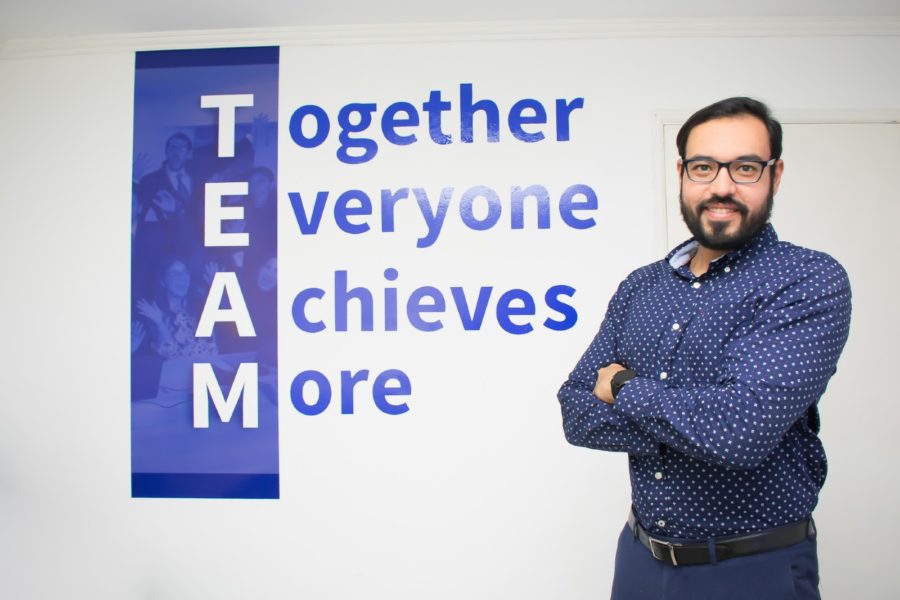Start-ups and fairly new businesses are always looking for the best candidates to fill in the right role in their companies, but normally they don’t know exactly where to look or who to look for. If you also have this kind of doubt about who to hire and what position to fill in your newly established business, you are missing a little bit of workforce planning in your business.
Workforce planning is a workforce management practice that can help your company be more prepared for future hiring challenges. It will ensure your organization has properly skilled employees in the correct roles. As workforce planning is just a part of workforce management, we can’t talk about it without talking about workforce management first.
Workforce management is an integrated set of processes that a company uses to optimize the productivity of its employees. It involves effectively forecasting labor requirements and creating and managing staff schedules to accomplish a particular task on a day-to-day and hour-to-hour basis.
It will help you to gain a better insight into your business metrics, track employee performance, improve payroll efficiency, lower operational costs, better customer service, and much more.
Good workforce management achieves all these benefits by ensuring that the following tasks are performed properly:
- Forecasting and budgeting. Knowing how many and the type of staff resources are needed and knowing how much staff a company can afford to have on hand.
- Staff scheduling. Allows companies to automate staffing based on all business variables, such as vacations, availability, workload, and absences.
- Time and attendance. Helps companies better predict changes in demand and manage planned and unplanned staff absences and/or leaves.
- Employee performance management. Gives businesses a better understanding of employee engagement levels so they can better focus on what drives employee productivity.
- Compliance. includes being aware of compliance with state, federal, and local laws as well as the tracking of required certifications and training for specific roles, missed breaks, labor standards, family/sick leave requirements, and union agreements.
- Payroll and benefits administration. Reduces manual payroll and benefits administration.
- Vacation and leave planning. Allows companies to track staffing levels and digitally handle time-off requests and approvals.
All of these tasks fall into the area of Human resources and Administration, basically meaning that having proper workforce management in your business will guarantee that all processes are performed correctly.
If you need help getting started with your workforce management plan you can always hire an HR freelancer to help you analyze the current state of your business and solve the most urgent necessities your business may have.
Now that we talked a bit about workforce management… In this article, we are now solely going to focus on a certain aspect of it, workforce planning, define what it is, explain why it is important, and we will give you some tips to follow to execute it correctly in your business.
Without further ado. Let’s begin
What is Workforce Planning?

Workforce planning is the process of analyzing, forecasting, and planning workforce supply and demand. It involves reviewing current staff, examining current and future personnel needs, and identifying gaps between the supply and demand.
By identifying gaps, organizations may plan effectively to ensure their organization has properly skilled employees in the correct roles. This helps support the organization in maintaining efficient operations and achieving its goals. Organizations may use workforce planning to plan their hiring strategies appropriately. It helps them identify who they need to hire, when they should hire them and why it’s important to hire them. There are two common workforce planning models that organizations may use:
‘Hard’ (or operational) workforce planning.
Operational planning is about numbers: predicting how many people with what skills are likely to be needed. It’s often beneficial in helping managers develop daily work schedules for employees and assisting employees in understanding their responsibilities and maintaining productivity throughout the workday. This model includes elements of talent management to help fairly distribute talent throughout the organization.
This distribution may make it easier to identify potential staffing gaps within the organization or find roles or processes that no longer support the success of the organization.
‘Soft’ (or strategic) workforce planning
Strategic planning is about defining a strategy or developing a strategic framework within which information can be assessed. Focusing on broader issues within the organization, soft planning helps ensure the workforce aligns with the organization‘s overall objectives, long-term vision, and goals. It may involve planning for goals that require months or years and involve all aspects of the organization.
Components of strategic workforce planning include evaluating the current talent as employees leave the organization, anticipating future talent needs, estimating potential barriers to hiring, and developing and implementing an effective strategy for analyzing the workforce.
It is important to understand that the workforce planning process can take many forms, but should not be overly complicated. The key people involved in the business should be involved to ensure that they understand the data and what it means for both short and long-term resourcing needs.

Workforce planning can be described as a series of steps. However, it is vital to understand that workforce planning is an iterative process that is not rigidly linear. To start the workforce planning process your organization should go through these stages:
Stages of The Workforce Planning Process
- Understand the organization and the operating environment: What does the organization’s structure look like now and how’s likely to look in the future? What are the plans to increase productivity, including changes to organization structure and processes? Are there plans to introduce or update technology?
- Analyzing the workforce: Identify and analyze knowledge, skills, abilities, and talent profiles, as well as attrition rates and other factors such as employees’ views on job security, satisfaction, and intention to leave.
Assess other parameters, such as people by geographical location or business division (some functions stretch across divisions), demographic differences within the workforce, or contractual differences as to how work is resourced. - Determine future workforce needs: Identify future skills and capabilities and predict the timeframes involved. Scenario planning can show how different futures might affect people’s requirements and help to formulate contingency and adaptive plans for achieving future goals.
- Identify gaps in workforce skills and knowledge: Future roles are likely to need greater technological and digital awareness. Where recruitment, retention, or both, present a challenge, skills will need to be built via staff development or borrowed via outsourcing or the gig economy.
- Develop an action plan that has functional, numerical, and adaptational flexibility: An agile workforce who can adapt to change will help create a change-ready organization that can proactively restructure as needed.
- Monitor and evaluate action plans and solutions: Develop and agree on a set of actions with appropriate support and information for managers and regular reviews of outcomes. Design and embed clear evaluation processes into all stages of the process.
Remember that there is no specific order to go through these stages, they have to be constantly reviewed and updated so take your time while going through each of them thoroughly so that you are 100% sure that you know what your business needs and what plan you will take.
Why is workforce planning important?

Workforce planning is essential in today’s business environment. It helps your company prepare for future challenges, analyze your workforce competencies to ensure you can achieve your goals, as well as reduce costs on ineffective hiring processes.
It’s effective in providing a strategy for evaluating the current workforce, particularly for determining whether the current employees have the appropriate skills for meeting the business needs. This allows organizations to identify potential gaps easily, aiding in successful hiring processes.
Workforce planning will ensure your business is not only competitive but ready for future growth and prepare for future challenges. Without this process, you may be unaware of the limitations of your current staffing, causing potential issues that could limit an organization’s efforts to implement a business strategy. Having an excellent understanding of your workforce will help you improve hiring processes because hiring professionals better understand which areas to focus on improving.
Benefits of proper workforce planning:
– Adapt to changes. Handle changes in demands or requirements by having a flexible, multi-talented workforce.
– Increased analysis and evaluation will give you the knowledge needed to make decisions about how to structure and deploy your workforce to meet your objectives.
– Identify and overcome both internal and external barriers that create challenges for your workforce.
– Address inefficiencies. Ensure the right people are in the best jobs for them.
– Enhance quality. Better turnaround times by assigning tasks to the most qualified employees.
– Align your workforce requirements directly with what your company is trying to achieve.
– Prepare for unexpected workforce issues that could occur in the future.
– Save you money on last-ditch and desperate hiring processes when you previously might have over or under-estimated your workforce requirements.
– Improve retention. By placing employees in roles where they can best apply their skills, they may feel more valued and engaged, reducing the number of employees who leave the organization.
– Provide professional development. Help develop a more skilled staff by identifying skill gaps and providing training in these areas.
– Reduce labor costs. Reduce labor costs by promoting efficiency within the workforce and eliminating unproductive practices.
Get a hold of all these benefits by giving us a call and letting our HR freelancers help you in your organization’s workforce planning.
Start implementing workforce planning in your organization

Remember that workforce planning will only work if it can be implemented positively and successfully throughout your whole organization. It’s vital that:
- Starts with a collaborative approach. It’s vital for all parties to agree and understand the actions that are going to be taken.
- Understanding on responsabilities. It’s essential that everyone involved is clear about what they’re responsible for and what action they need to take.
- Provide support for managers. Managers will need support from people, professionals, and others to fulfill their responsibilities. They must have the skills and understanding to participate fully in the planning process and act on the outcomes.
- Review and evaluate. As workforce planning is about trying to predict the future, evaluation needs to look at the outcomes of the decisions and their consequences. Evaluation should be iterative – the more proficient organizations become at workforce planning, the more likely they are to identify relevant evaluation criteria.
- Data is kept over time. Relevant workforce data relies on keeping information on joiners, leavers, and movers each year.
Taking all of that into consideration, you can start taking your first steps toward creating your first workforce planning strategy. When creating this strategy remember to think about:
- Inputs to the plan: What information will be relevant? Does the organization have good quality data?
- Communication: Supporting managers to act on the plan and using appropriate language and data.
- Measurement and evaluation: What criteria will be used to assess the success of the plan? How will it be reviewed and refreshed?
Asking yourself these questions will help you a lot when following the steps for workforce planning.

Steps for workforce planning
1. Evaluate current talent
Analyze your supply of talent and strive to evaluate your internal and external supplies.
Think about your current employees and their abilities, and compare this with your current organizational needs and success. Consider your organization’s potential for hiring new employees, such as if it’s financially possible or whether your company has access to the talent it needs.
2. Think about the future
Review your organization’s objectives and business plans.
Analyze the specific requirements for the talent these require and what responsibilities employees may be responsible for completing. It’s also important to consider potential changes to staffing, such as whether employees may leave the company or if there may be opportunities for growth.
3. Identify potential gaps
Compare your assessments to identify potential gaps.
Review the skills of your current employees and how they align with your objectives and look for potential surpluses or gaps in certain skills. Similarly, compare their credentials with the future requirements of the organization. Identify specific gaps of skills or roles your organization may need to fill.
4. Develop a solution
Based on your assessment, determine the appropriate solution.
For example, evaluate whether providing additional training would suffice for better preparing your current workforce to satisfy organizational needs. Similarly, if you determine you need to hire more employees, research your budget options and prepare for the recruitment process.
5. Implement and monitor your solution
Once you identify the solutions for your workforce needs, implement them accordingly.
If you have multiple gaps to address, be sure to prioritize and implement them properly. Continue to monitor the success of your strategies, and evaluate whether they correct the gaps. As needed, repeat the process to continue to maintain an efficient and sufficient workforce.
Extra tips when starting in workforce planning
If you still have some doubts after checking on the previous steps, these tips will help you clear them out:
- Get lots of input. Start with a simple analysis of your team members and ask them questions like:
– What do you want to do less of?
– What do you want to do more of?
– What do you want to create that doesn’t exist today?
– What do you want to completely eliminate?
Getting early input ensures that you aren’t burning yourself out and can maintain energy for strategic workforce planning decision-making when the time comes. - Don’t make decisions by yourself. All decisions and recommendations should be run by all the teams involved with your business (e.g. finances, hr, administration, etc) to help provide role clarity to employees and business leaders from whom you will solicit information and opinions.
- Ask for everything you need. ensure that you’re covering all the things you and your team will need to succeed. Remember to always be aware of the budget and resources for headcount, technology, training and development, employee engagement, results-based salary increases, bonuses, and promotions.
- Don’t just think in terms of adding headcount. People are your most expensive asset. Utilize those assets well and think about a workforce plan that leverages existing talent more effectively, also consider your other investments such as infrastructure, equipment, etc.

Now you should be all set to start your workforce planning on the right foot! Still, if you have any doubts remember that you can always reach out to us and we’ll try to help you in everything we can.
So, what’s the next step after establishing a workforce plan?
What to do after establishing a workforce plan
If you already have an established workforce plan, it’s time to move on to the next step of workforce management. And guess what? We can help you out with that!
Once you are aware of your exact needs and have a clear workforce plan we can help you fill in all the spots your business is looking for, by matching you with the best freelancer fitted for the job!
You are only one step away from finding the right match for your business, the solution is always closer than you expect.





